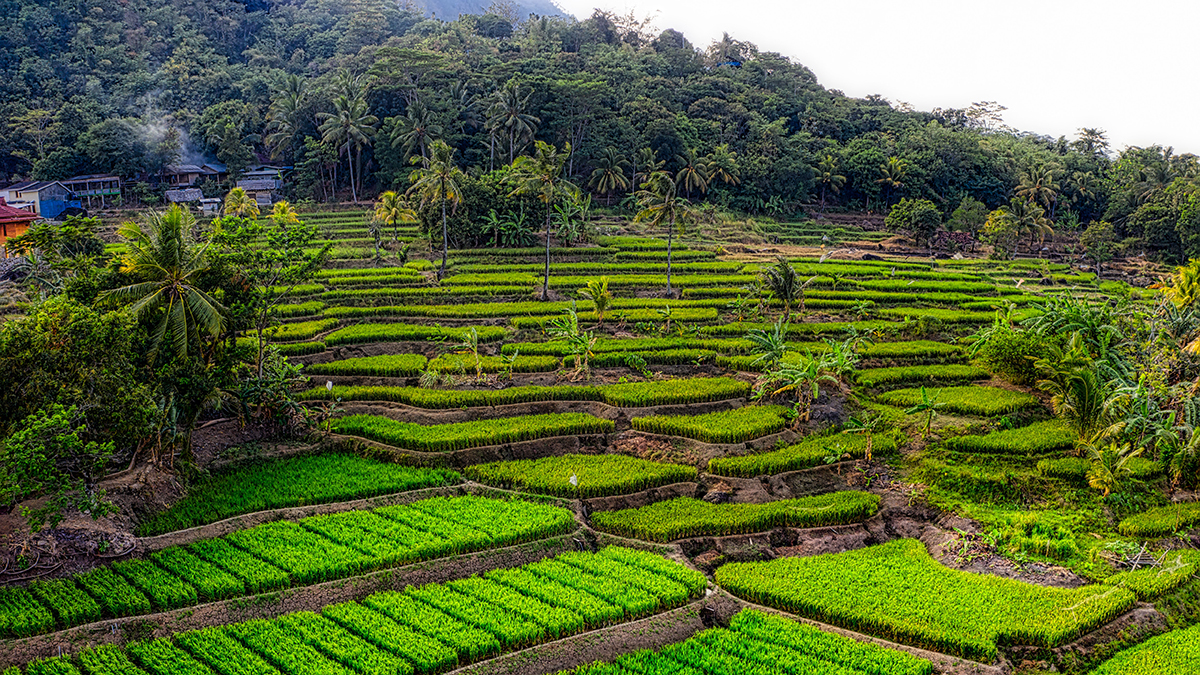This week’s climate story brings us to the green rice fields of Thailand. As in many other countries, rice is a staple food here. But did you know growing rice causes a significant amount of greenhouse gas emissions?
Traditionally, rice is grown on flooded fields called rice paddies. These paddies create ideal conditions for bacteria that emit methane. Why is methane bad? Methane has more than 80 times the warming power of carbon dioxide over the first 20 years after it reaches the atmosphere.
Today’s story shows how rice farmers in Thailand and all over the world tackle global warming. Reducing and interrupting the period of flooding reduces emissions. This method is called “alternate wetting and drying” and this is how it works:

Traditionally, rice fields are continuously flooded as you can see in the left picture. When irrigation is stopped, the water level slowly decreases, as shown in the center. On the right, the water level is about 15 cm below soil level, where the roots still get water. Once the water level gets lower, the fields gets flooded again and the process of alternate wetting and drying starts all over. This actually increases yields while farmers safe water and electricity to pump the water.
Let’s get back to Thailand. A project funded by the climate finance program NAMA Facility will outreach to 100,000 rice farming households to shift from conventional to low-emission farming. They are implementing best practices from the sustainable rice platform :
- Alternate wetting and drying: Mid-season drainage alone reduces methane emissions by 35 to 70 percent.
- Laser land leveling: Fields are leveled with the help of lasers to reduce water usage and increase grain yield and quality.
- Site specific nutrient management: Farmers reduce the amount of fertilizer and apply it based on local conditions and only when needed.
- Straw and stubble management: Instead of conventional burning, rice straw and stubble get removed from the field and used for other purposes or incorporated back into the soil.
In Thailand, rice farming has long traditions. The NAMA rice project works with the government and directly with rice farmers to change to new, sustainable farming methods. Here is a quote from Rampha Khamhaeng, a rice farmer from central Thailand:
To be honest, at first I didn’t buy it….Now I tried it and it works — it’s the best way
https://www.ft.com/content/8ff2b454-9390-11ea-899a-f62a20d54625
What I like most about this project is that it reduces emissions and the same time safes farmers money by using less water, fertilizer, and energy. This is another climate solution that is not only more sustainable, but also safes money. Let’s hope many more farmers all over the world are switching to sustainable rice growing practices soon!


